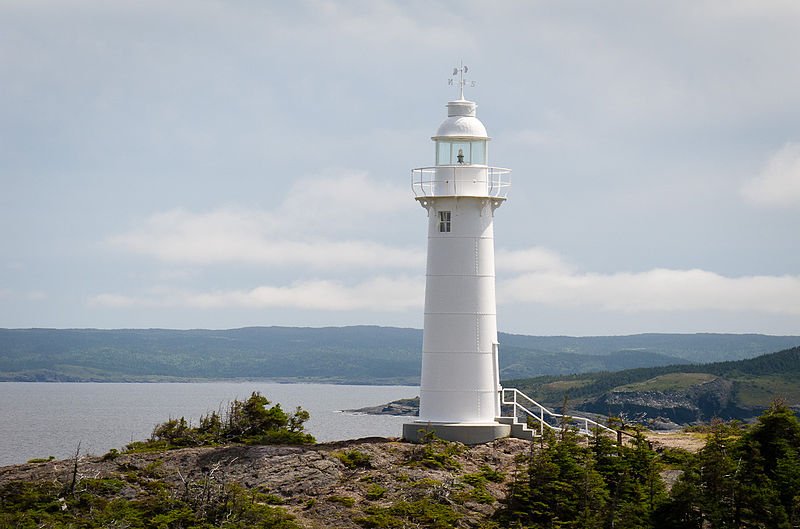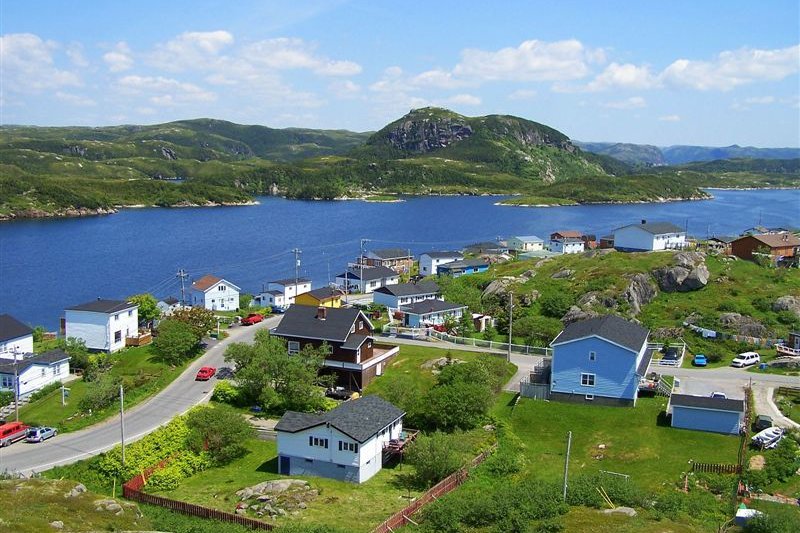 The Battery in St John's, Newfoundland
The Battery in St John's, NewfoundlandSource: https://commons.wikimedia.org/wiki/File:TheBatter.jpg
Author: Frank Gaillard

Cities and Sights in Newfoundland & Labrador on this website
Newfoundland and Labrador (NL) is the easternmost province of Canada comprising the island of Newfoundland and the mainland Labrador. Newfoundland and Labrador has a populaton of around 515,000 people (2012 estimate), 94% of whom reside in Newfoundland. In terms of area, Newfoundland covers 108,860 sq km (42,031 sq mi) whereas Labrador is larger, at 294,330 sq km (113,640 sq mi).
Labrador shares a border with Quebec. Newfoundland is separated from Newfoundland by the Strait of Belle Isle, and from Nova Scotia by the Cabot Stait. It faces the Gulf of St Lawrence to the west, and the Atlantic Ocean to the east and south.
Apart from Nunavut, Newfoundland and Labrador was the last to join the Confederation of Canada, doing so on 31 March, 1949. It originally entered the confederation as Newfoundland, but through an amendment of the Constitution of Canada changed its name to Newfoundland and Labrador in 2001.
 Kings Cove Head Lighthouse, Newfoundland and Labrador
Kings Cove Head Lighthouse, Newfoundland and LabradorSource: https://commons.wikimedia.org/wiki/File:Kings_Cove_Head_Lighthouse.jpg
Author: John.king

The province of Newfoundland and Labrador has been inhabited for over 9,000 years. The indigeneous groups were sea-mammal hunters who lived along the coast and built longhouses. The earliest Europeans to reach the Newfoundland and Labrador area were Vikings. Archaeological evidence of their settlement is preserved at L'Anse aux Meadows, today a World Heritage Site.
Italian navigator Giovanni Caboto, sailing for King Henry VII of England as John Cabot, is said to have arrived along the Newfoundland or Labrador coast, though this is disputed by historians. Portuguese mariner João Fernandes Labrador, who gave his name to one half of Newfoundland and Labrador, arrived, explored and mapped the coast in 1499-1500. In August 1583, Sir Humphrey Gilbert, armed with letters patent from Queen Elizabeth I, landed on Newfoundland and claimed it from Great Britain. Until then, it was known by its Portuguese name, Terra Nova, but was liberally translated to Newfoundland.
 Burgeo, Newfoundland
Burgeo, NewfoundlandSource: https://commons.wikimedia.org/wiki/File:BurgeoNL.JPG
Author: Aiden Mahoney

Compared to other parts of Canada, Newfoundland and Labrador has a weak economy. The collapse of cod fishery caused unemployment to rise to record levels records. This was brought down when petroleum and mining industries took off. Today services industries contribute the biggest share to the GDP, while the fishing industry remains important.
Visiting Newfoundland and Labrador
St John's Airport receives flights from major cities in Ontario, Quebec and the Atlantic provinces of Canada. While Labrador is on mainland Canada and can be reached by road, Newfoundland is separated from the mainland and can only be reached by plane or ferry.Towns in Newfoundland and Labrador
- St John's - capital
Places of Interest in Newfoundland and Labrador
- Churchill Falls
 Latest updates on Penang Travel Tips
Latest updates on Penang Travel Tips

Copyright © 2003-2025 Timothy Tye. All Rights Reserved.

 Go Back
Go Back